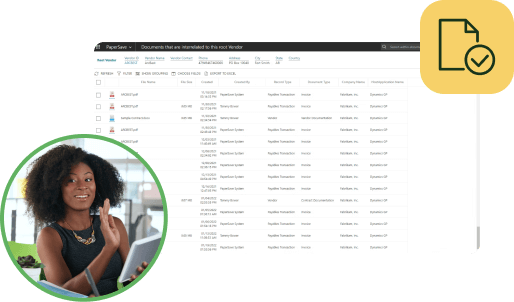
Wadih Pazos
Wadih founded both PairSoft and PaperSave. He is an avid technologist who specializes in streamlining operations and maximizing productivity.
View all posts by Wadih PazosWadih Pazos

Showing employees the benefits and training them as the migration occurs will ensure the new system will be used flawlessly in the end. Document management software allows workers to collaborate and connect over projects in a more streamlined fashion.
“[A project management] platform means the work and information sharing are seamlessly integrated into an organization’s existing enterprise and productivity apps, allowing communication to happen when and where it’s needed, on any device,” Sameer Patel, senior vice president of Products and Go-to-Market, told CIO.
Creating clear social interactions in the workplace will form long-lasting relationships with customers.
There has to be a tool all workers can use to connect to one another. CIO suggested creating an online forum where staff can post information and help each other create ideas.
During the changeover to become a paperless office, an established correspondence system is crucial, as employees will be looking to support each other during the change. Some document management software has the ability to be integrated with social media communications through an application program interface.
“A robust social collaboration solution will also take advantage of an organization’s network by bringing together the people, data and processes needed to improve engagement and enable problem solving and more informed decision making whether they’re in the office or communicating from the field,” Patel said.
Establishing a paperless environment offers businesses a huge opportunity to create a whole new culture for workers. Inc. recommended doing so by meeting one-on-one with workers to ask about how the change is affecting them and to figure out what they need help with.
“People are very complimented that a boss two levels up wants to talk with them,” HR consultant Rick Galbreath told Inc.
When supervisors are willing to talk to workers about how they’re faring during the transition, it creates an environment where they feel comfortable enough to go to higher-ups with questions. This is crucial to establish during the transition to a paperless office.
The most important part of creating a paperless office is to teach employees how to improve their work methods so it positively affects customers. Other processes within paperless software deployments, such as e-signatures, make cash exchange convenient for workers and clients.
For example, a characteristic of document management software is invoice automation. No longer do businesses have to wait for payments as it creates efficiency – and customers do appreciate it. Clientele are also impressed with how fast companies can react to instances with paperless document management systems.
No longer do employees have to find hard-copy reports; they can use complex search engines to discover the documents they need quickly to accomplish their business goals. Both workers and customers benefit from the evolved communication document management software provides.
Automated workflows empower your team to focus on larger, more complex initiatives without having to think about small processes.


Many organizations start with manual receipt handling, fragmented card feeds and slow AP processes. Implement AI agents to auto-capture receipts, route approvals, enable punch-out buys and post to the ERP.
Result: faster batching, fewer errors and cost savings. “This saves us hours every month.”
Many organizations face slow, paper-heavy AP and fragmented procurement that waste time and inflate costs. AI Agents can automate approvals, PO matching and record sync to improve speed, accuracy and control. Client quote: “It freed up hours and made our process reliable.”
Operational drag and rising costs slow growth: teams waste time on manual tasks, misaligned priorities and opaque processes. AI Agents help automate routine work and coordinate actions across teams. “We’ve lost time to repeats and handoffs,” says a typical client.
Companies struggle with manual procurement, fragmented approvals, and costly integrations that slow growth and obscure spend. Our AI Agents streamline requisitions, POs, and invoice matching to cut manual work and improve visibility. “We were wasting time and missing insights,” says a client.

Many teams start with fragmented PO/AP systems, manual matching and delayed financial reporting. Deploying AI agents to automate PO checks, real-time encumbrance tracking and invoice matching reduces processing time and errors, delivering live budgets and faster closes. “Finally, we can see current balances and approve instantly.”
Many companies juggle growing invoice volumes and legacy systems. They struggle with manual processes, compliance gaps and limited headcount. Our AI Agents automate integrations, enforce rules and surface exceptions. The typical outcome: faster closes and measurable ROI. “We stopped chasing invoices.”